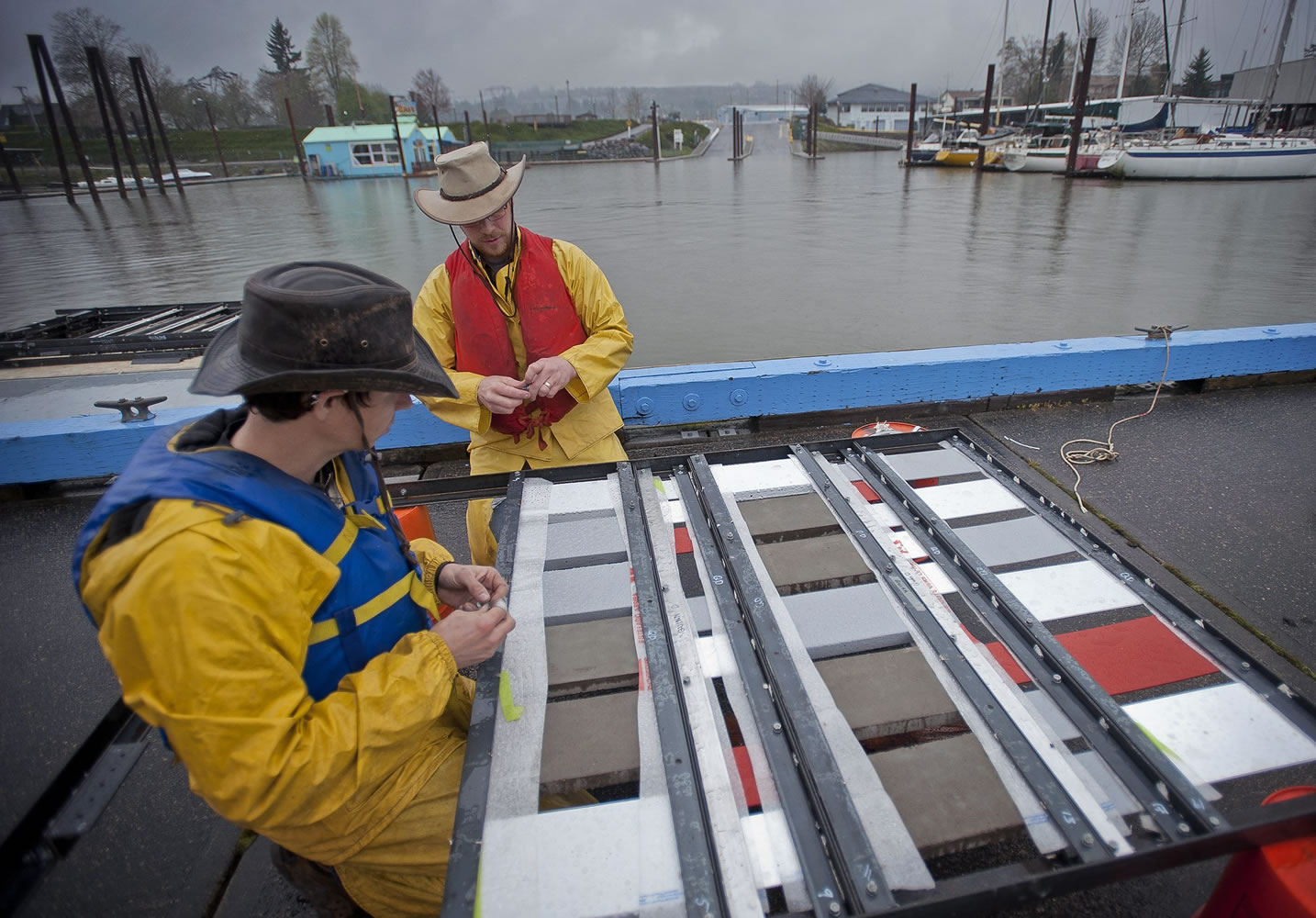Invasive freshwater mussels so far haven’t found a foothold in the Columbia River. That doesn’t mean regional hydropower managers and researchers are sitting idle, waiting for them to show up.
A research project under way at the Port of Camas-Washougal aims to make sure the Northwest is better prepared if — or when — the tiny mollusks do arrive.
“They’re not here yet,” said Mark Sytsma, a Portland State University environmental sciences professor. “That we know of.”
Fast-breeding quagga and zebra mussels have a known track record of causing costly problems elsewhere, notably in the Great Lakes and, more recently, in Lake Mead at the Nevada-Arizona border. They’ve encrusted dam structures, clogged pipes and crowded out other wildlife, requiring millions of dollars in management and mitigation efforts.
Local officials worry that mussels could cramp the Northwest’s hydroelectric facilities and irrigation systems connected to the Columbia. They may also crowd fish passage facilities built into the dams.
Before that happens, the Bonneville Power Administration and PSU are testing a set of chemical coatings they hope will keep mussels from attaching themselves to the Columbia’s steel and concrete infrastructure. Researchers will finish placing nearly 900 small test panels in the river next week, beginning a three-year evaluation of how the treatment holds up in the water. Later this year, they’ll take panels directly to Lake Mead to see how mussels themselves react to the coating. Researchers will test how much force it takes to get them off the treated surfaces, hoping water current alone might be enough.
BPA has kicked in $210,000 for the project, now in its second year.
“We spend money on prevention, but that’s a lot cheaper than managing,” Sytsma said.
This week, researchers spent a rainy Wednesday attaching test panels to the metal frames that will hold them in place off a dock at the Port of Camas-Washougal. The work will try out three silicon-based coatings on both steel and concrete, evaluated against two controls — concrete treated with a “Crystal Seal” used in the area now, and bare concrete. A total of 27 frames will assembled, each holding a few dozen randomly arranged test panels.
The metal frames should be easy enough to identify as researchers track them during the next few years. That’s because each bears its own female name — “like boats and hurricanes,” said PSU research assistant Steve Wells. Among those awaiting duty earlier this week: Olivia, Uma, Joyce, Teresa and Amy.
The latest work isn’t the first time BPA and PSU have turned their attention to quagga and zebra mussels. A separate study placed mussels into transported Columbia River water to see how the creatures might acclimate to the Northwest. That research is ongoing, Sytsma said.
The Northwest holds at least one advantage over other parts of the country that have scrambled to respond to fast-growing mussel populations, said Jim Irish, BPA water quality manager. Local authorities can see it coming, he said, and have been able to do more in the way of outreach, education and preparation. That puts the region in a much better position than simply waiting until mussels become a problem, Sytsma said.
“We’re at least more ready than we were,” Sytsma said.
Eric Florip: 360-735-4541; http://twitter.com/col_enviro; eric.florip@columbian.com.




